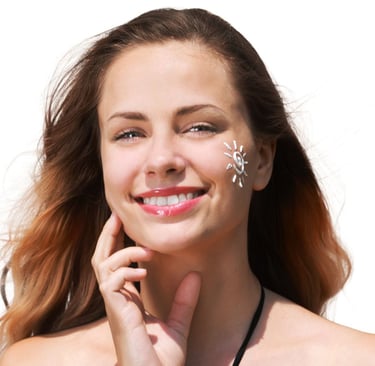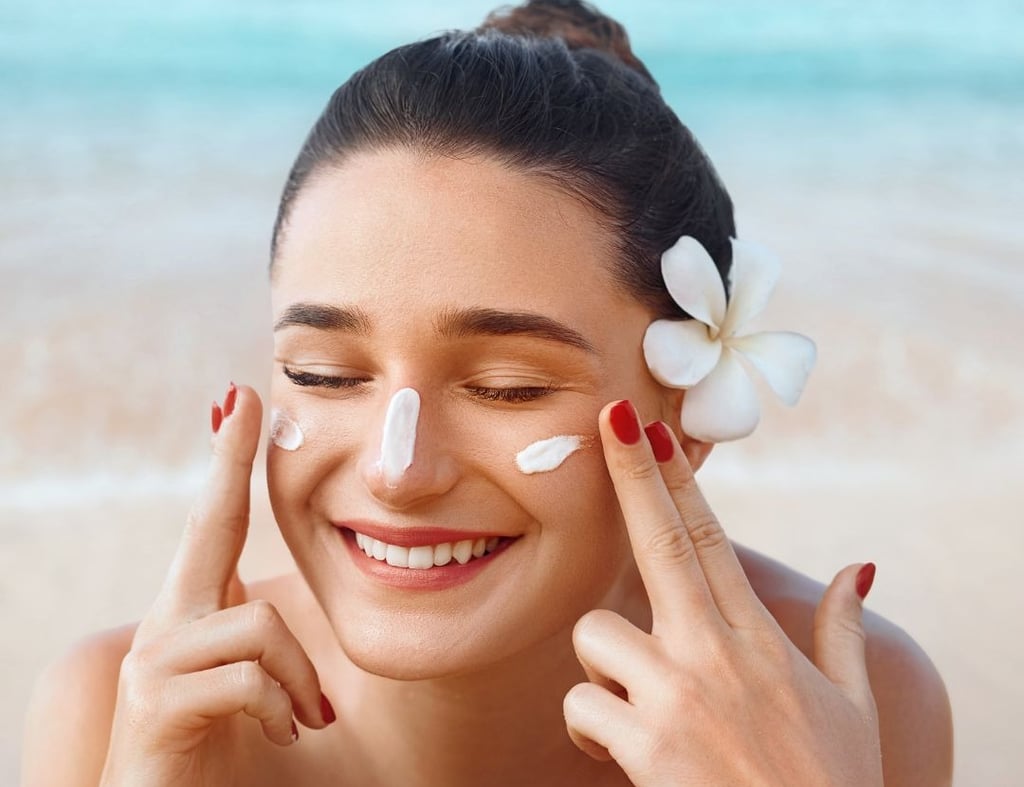The Ultimate Guide to Sunscreens: Protecting Your Skin After a Facial
When you’ve just gotten a facial, your skin is fresh, rejuvenated, and often more sensitive than usual. It's important to take extra care to protect it from harmful sun exposure, as the skin is more vulnerable after treatments like exfoliation, extraction, or chemical peels. Sunscreen becomes even more essential for post-facial care to prevent irritation, redness, hyperpigmentation, and premature aging.
2/25/20254 min read


When you’ve just gotten a facial, your skin is fresh, rejuvenated, and often more sensitive than usual. It's important to take extra care to protect it from harmful sun exposure, as the skin is more vulnerable after treatments like exfoliation, extraction, or chemical peels. Sunscreen becomes even more essential for post-facial care to prevent irritation, redness, hyperpigmentation, and premature aging.
Why Sunscreen Is Crucial After a Facial
Sensitive Skin: Facials often involve exfoliation, which removes the outer layer of dead skin cells. This makes the skin more sensitive and prone to sunburn.
Chemical Peels or Exfoliation: These treatments can leave your skin more exposed to UV damage, as the protective layer is temporarily compromised.
Preventing Hyperpigmentation: If you’ve had any extractions, laser treatments, or peels, you're at a higher risk of developing dark spots (post-inflammatory hyperpigmentation) if you don’t protect your skin.
Maintaining Results: Sunscreen helps preserve the glow and benefits of your facial by preventing damage and future skin concerns.
Key Factors to Look For in a Post-Facial Sunscreen
When selecting a sunscreen to use after a facial, choose one that offers optimal protection while also being gentle on sensitive skin. Here’s what you should look for:
1. Broad-Spectrum Protection
Choose a sunscreen with broad-spectrum protection, meaning it protects against both UVA and UVB rays. UVA rays cause premature aging, and UVB rays cause sunburn, both of which can cause long-term damage to the skin.
2. SPF 30 or Higher
A sunscreen with SPF 30 is the minimum you should go for after a facial, but SPF 50 is recommended for maximum protection. Even on cloudy days, UV rays can still cause damage, so consistent use is important.
3. Mineral vs. Chemical Sunscreens
Mineral (Physical) Sunscreens: These are often better for sensitive skin, as they contain zinc oxide or titanium dioxide, which sit on top of the skin to reflect UV rays.
Chemical Sunscreens: These absorb UV rays and convert them into heat. They are usually lighter in texture but can irritate sensitive skin, especially post-facial.
4. Hydrating Ingredients
After a facial, your skin might feel dry or tight. Look for sunscreens that contain hydrating ingredients like glycerin, hyaluronic acid, or aloe vera to keep your skin moisturized while protecting it from the sun.
5. Non-Comedogenic
If you have acne-prone skin or have had extractions during your facial, opt for a sunscreen that is non-comedogenic to avoid clogging your pores and causing breakouts.
6. Gentle Formula
Avoid sunscreens with harsh ingredients, like artificial fragrances or alcohol, as they can irritate freshly treated skin. Opt for a gentle, soothing formula.
Types of Sunscreens to Consider
Tinted Sunscreens
Tinted sunscreens contain iron oxide, which helps protect against visible light, especially blue light from digital devices, and can provide an extra layer of protection for sensitive skin post-facial.
The tint also helps reduce redness, which can be common after certain facials like extractions or chemical peels.
Gel or Water-Based Sunscreens
Gel or water-based sunscreens feel lightweight and are easily absorbed into the skin, making them ideal for those with oily or acne-prone skin post-facial.
These types of formulas hydrate the skin while providing sun protection without clogging pores.
Spray Sunscreens
Convenient and easy to apply, spray sunscreens offer an effective way to protect your skin throughout the day, though they can sometimes be harder to apply evenly compared to lotions or creams.
If using a spray sunscreen, make sure you spray it generously and let it absorb before touching your skin.
How to Apply Sunscreen After a Facial
Wait for Your Skin to Settle: After your facial, give your skin a few minutes to settle before applying sunscreen. If your skin has been treated with any serums or moisturizers, allow them to fully absorb first.
Apply Generously: Use about a nickel-sized amount for your face and a little more for your neck and décolletage. Don’t forget your ears, hands, and any exposed skin.
Reapply Regularly: Sunscreen should be reapplied every two hours, especially if you're going outside. If you're sweating or swimming, reapply more often.


Best Sunscreens for Post-Facial Care
Here are some excellent sunscreens that are well-suited for post-facial care:
EltaMD UV Clear Broad-Spectrum SPF 46
A lightweight, broad-spectrum sunscreen that's ideal for sensitive skin. It contains niacinamide, which soothes the skin, and it’s oil-free, making it a great choice for acne-prone skin.
La Roche-Posay Anthelios Melt-in Sunscreen Milk SPF 60
Offers high SPF protection and is water-resistant. It’s known for its gentle formula and is suitable for even the most sensitive skin types.
Neutrogena Hydro Boost Water Gel Lotion SPF 50
This gel-based sunscreen provides hydration and broad-spectrum protection. It’s perfect for dry skin after facials and leaves a non-greasy finish.
Supergoop! Unseen Sunscreen SPF 40
Known for its invisible finish and lightweight texture, this sunscreen is great for daily wear. It also provides broad-spectrum protection without feeling heavy or greasy.
Colorescience Sunforgettable Total Protection Brush-On Shield SPF 50
A convenient, portable option that’s perfect for on-the-go reapplication. It provides SPF 50 protection with a mineral formula and helps with skin tone correction.
Additional Tips for Protecting Your Skin Post-Facial
Avoid Direct Sun Exposure: Try to avoid prolonged sun exposure immediately after your facial, especially if you've had an exfoliating treatment. If you need to go outdoors, wear a wide-brimmed hat and seek shade when possible.
Be Mindful of Makeup: If you wear makeup after a facial, ensure it’s non-comedogenic and doesn’t contain any irritating ingredients. Mineral-based foundations with SPF can provide additional sun protection.
Stay Hydrated: Hydrating from the inside out helps your skin recover after a facial. Drink plenty of water and use a hydrating moisturizer to keep your skin balanced.
Avoid Hot Showers or Steam: Post-facial, your skin can be extra sensitive to heat. Hot showers or steam can irritate freshly treated skin, so opt for lukewarm water.
Conclusion
Sunscreen is one of the most important steps in maintaining the health and results of your facial. Whether you’ve had an exfoliating facial, extractions, or chemical peel, protecting your skin from the sun ensures that your skin remains radiant, smooth, and free from further irritation. Choose a sunscreen that suits your skin type, provides adequate protection, and is gentle enough for post-facial care.
Facial Bangkok
Discover top-notch treatments for ultimate facial rejuvenation in Bangkok - Thailand.
Guide
© 2024. All rights reserved. Designed by Pimclick SEO Agency
Article
